Ever wondered if there’s more to know about Jesus’ tomb? Let archaeology experts teach you! This blog post is an excerpt from the Zondervan Handbook of Biblical Archaeology.
ARE ALL TOMBS THE SAME?
According to Jewish practice the body of the deceased was initially laid to rest in the inner chamber of a tomb. First-century tombs characteristically had a small forecourt that led to the interior features of the tomb, including an inner chamber with benches situated along the walls, often with arcosolia, arched recesses in the wall, a lower elevation pit (for standing inside the tomb), and tunnel-like niches called loculi (Latin) or kokhim (Hebrew).
No two tombs are exactly alike, and though they share these common features, as Jerusalem archaeologist Shimon Gibson has noted, “individualism was pronounced.” This means we have not found, and should not expect to find, a first-century tomb precisely matching the tomb of Jesus as described in the Gospel accounts.
THE ROLLING STONES
The body of the deceased was laid out on a stone bench and a heavy stone was set into the small entrance door and sealed to thwart the unwanted entrance of animals and grave robbers. Matthew reports that a “big” (Greek megan) stone was rolled against (Greek proskulisas) the door of Jesus’ tomb. Later, Matthew recounts how an angel “rolled back” (Greek apekulisen) this sealing stone from the door (Matt 28:2; cf. Mark 16:3–4; Luke 24:2).
However, the image of a rolling-stone tomb as the tomb of Jesus, while the common conception, has been questioned on the basis of archaeological study of Jerusalem necropoli. In the vicinity of Jerusalem there are 1,000 or more rock-cut tombs. Israeli archaeologist Amos Kloner, who has examined more than 900 such tombs, found only four tombs dating from the late Second Temple period (the time of Jesus) that were closed by a rolling stone:
- the tomb of the Queen Helena of Adiabene
- the family tomb of King Herod of Jerusalem
- one nearby Herod’s Family Tomb
- another located in the upper Kidron Valley
These had a carved out slotted groove to one side of the entrance of the tomb made to receive a disk-shaped stone. The family could roll the stone forward in the track to cover the entryway of the tomb or roll it back to open it, allowing for new burials. These rolling stones weighed tons and could not have been moved by a single person.
DID JOSEPH ROLL THE STONE HIMSELF?
Gibson supposes that the stone covering Jesus’ tomb must not have been so heavy, since he observes both Matthew (27:60) and Mark (15:46) state that Joseph of Arimethea rolled the stone by himself. However, it should not be assumed that these statements mean that Joseph acted alone in the rolling of the stone any more than in transporting Jesus’ body to the tomb and wrapping it in a linen shroud (all of which the text says he did). The natural understanding of this is that Joseph took responsibility for and oversaw these tasks; he did not do them personally but had them done.
How many people does it take to roll a stone?
The women on the third day after the burial who came to anoint Jesus’ body said to one another, “Who will roll away the stone from the entrance of the tomb?” (Mark 16:3). These three women, even working together, understood that they were unable to move the stone.
Gibson also overlooks the clear statement in the next verse (Mark 16:4) that “the stone, which was very large, had been rolled away” (Greek megas sphodra). Even a passage in the apocryphal Gospel of Peter states that Pilate sent Petronius the Centurion with soldiers and they rolled there a great stone and laid it against the entrance to the sepulcher (8:31–33).
ROUND OR SQUARE?
The rolling-stone tombs, being very rare, were obviously reserved for royal families or the very wealthy and, therefore, not the type utilized by average Jewish families. Amos Kloner calculates that approximately 98 percent of stones used to close the entrances to tombs in Jesus’ day were square block stones. These were simple slabs shaped something like a bolt with one end designed to provide a close fit for the small opening forming the doorway of the tomb. The larger remainder of the stone had a flange so it would rest against the outside surface of the tomb. These stone “plugs” had the special name golal in Hebrew. Often a filling of pebbles or mortar would be added around these to prevent the entrance of small vermin and insects.
Evidence for a Square Stone
Therefore, since these are the more common form of sealing tombs and the disk-shaped blocking stones are rare, it would have been exceptional for Jesus’ tomb to be so sealed. This led archaeologist Amos Kloner, according to Megan Souter, to argue that the Gospel references to “rolling away” a stone from the entrance to a tomb was a misunderstanding of the normal method of sealing a tomb since square stones do not “roll.” This may be true of the average person in Judea and Jerusalem, but Joseph of Arimathea appears to be a wealthy and influential person in the New Testament.
Evidence for a Round Stone
However, Urban C. von Wahlde, in seeking to answer this question, analyzed the use of the Greek verb kuliō (“to roll”) in the Synpotic Gospels and concluded that the compounds of kuliō all have the idea of movement “toward” or “away from.” Therefore, in his opinion, the grammar does not fit the idea of moving a square-shaped stone, which would have properly been described as “moved” or “dislodged,” although Gibson contends the golal could also be “rolled” after a fashion.
von Wahlde also notes that while the Synoptic Gospels describe the sealing of the tomb in this manner, the Gospel of John uses a different Greek verb from the root hairo, with the meaning that the stone had been “removed” or “taken up” (Greek ērmenon) from the tomb (John 20:1). He argues that this description reflects “the Jewish burial practice much more accurately than any of the other gospels. He [John] has given us a detail none of the other gospels have.” He further argues that because Jesus’ tomb was a borrowed tomb for an ordinary Jewish family, the evidence is in favor of closure by a square stone.
von Wahalde concludes:
“It is not that these accounts are necessarily wrong. But they do give the wrong impression. It may very well be that people rolled the ‘cork-shaped’ stones away from the tomb. Once you see the size of a ‘stopper’ stone, it is easy to see that, however one gets the stone out of the doorway, chances are you are going to roll it the rest of the way.”
BUT, WAS JOSEPH WEALTHY?
Must we conclude that the information in the Gospels gives the “wrong impression?” The grammar of “rolling” (Greek kuliō + pros “up to” or apo “away from”) is unambiguous in the Synoptics, and it is an assumption that Joseph of Arimathea was an ordinary man with an ordinary family tomb. The Gospels portray him as a “rich man” (Matt 27:57), a “prominent member” of the Sanhedrin (Mark 15:43), and a man with significant status to be granted a private audience with Pontius Pilate and then given special permission to bury the body of a condemned criminal (not a relation) whose high-profile case had been controversial (John 19:38). This may imply a privileged position, which is reflected in the statement in the apocryphal Gospel of Peter (2:3) that Pilate was Joseph’s “friend.”
This description of an elite in Jerusalem society argues for someone whose family tomb could have fit the category of a rolling-stone tomb.
Additionally, the terminology for the tomb as “cut out of the rock” (Matt 27:60; Luke 22:53) is found in the Septuagint of Isaiah 22:16 with reference to a royal tomb. For the poorer lower class a cave was utilized for burial because a rock-cut tomb was too expensive. Joseph of Arimethea was able to afford the most expensive of tombs, the kind used by the upper class and nobility. Christian scholars through the centuries have seen this as a fulfillment of the prediction in Isaiah 53:9 of the Messiah’s death:
“He was assigned a grave with the wicked, and with the rich, in his death,”
noting also that as Jesus was a descendant of King David, he was royalty and therefore entitled to an appropriate burial. As to the exceptional grammar of John, commentators have long noticed this particular wording as indeed a detail added by John to the account but have drawn a different conclusion as to the purpose.
MODEL OF ROLLING STONE FIRST-CENTURY TOMB
A. Front Tomb Wall
B. Rolling Stone
C. Stopping Stone
D. Slanted Track for Rolling Stone
E. Entrance
F. Niche
G. Bench
H. Pit
I. Ossuary
J. Body Placed on Bench for Burial Preparation
ANGELS MOVED THE STONE
One could argue that while the stone had been rolled over the opening, the manner in which it had been rolled away was what was exceptional. The use of the perfect middle/passive participle (“had been moved away”) could suggest that the stone had been “thrown” some distance from the tomb, indicating a divine agency. In all accounts angels are mentioned as having entered the tomb, and therefore, must have been responsible for the removal of the stone. Matthew makes this very point:
“There was a violent earthquake, for an angel of the Lord came down from heaven and, going to the tomb, rolled back the stone and sat on it” (Matt 28:2).
Therefore, in this case, the stone may have been a rolling stone, but it was not technically “rolled away” as was the usual practice, but forcibly moved aside. This, then, was the detail of supernatural intervention witnessed by the women as one evidence of the resurrection that John wished to convey.
While archaeology can provide examples of specific rolling-stone tombs from the period and argue for the more common closure of tombs with square stones, the deciding factor in the case of Jesus’ tomb must be the interpretation of the biblical text. The kind of tomb and sealing stone implied in the text fit the archaeological data described above.


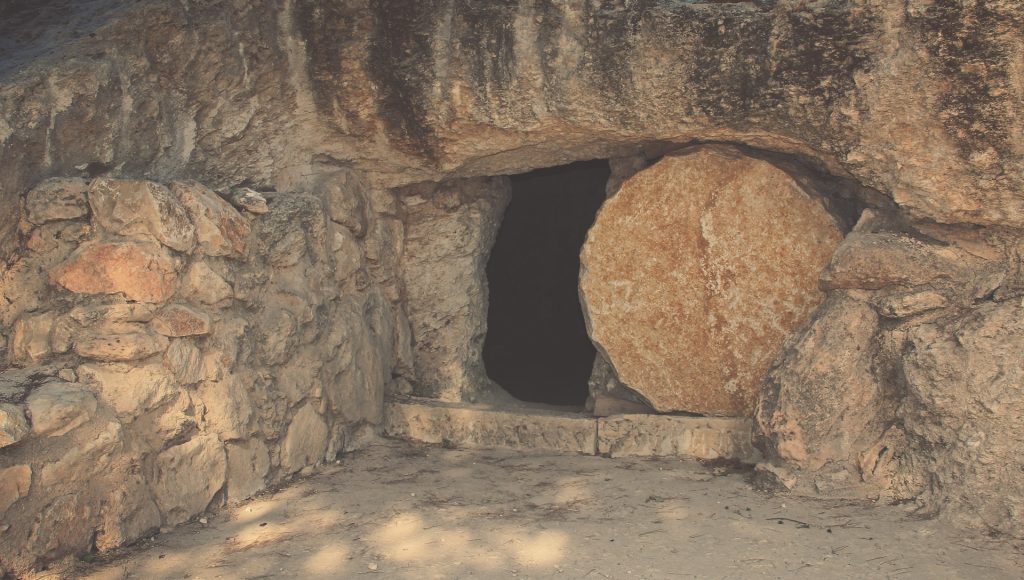
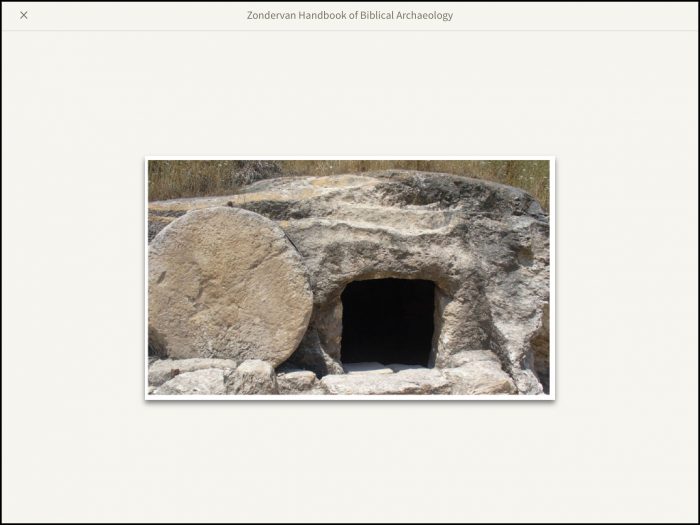
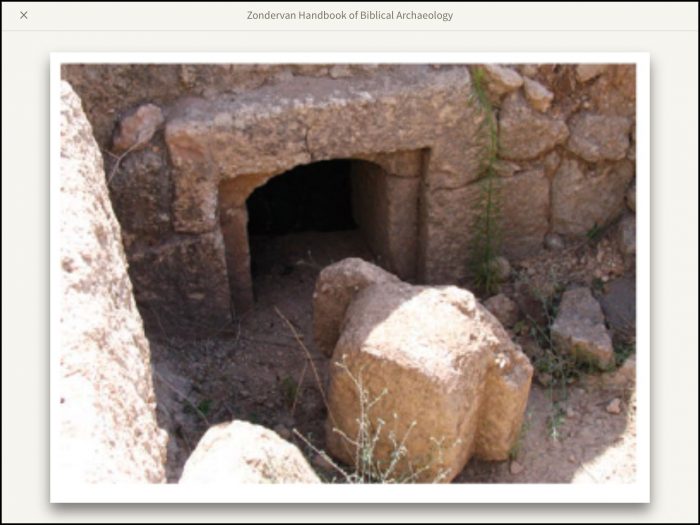
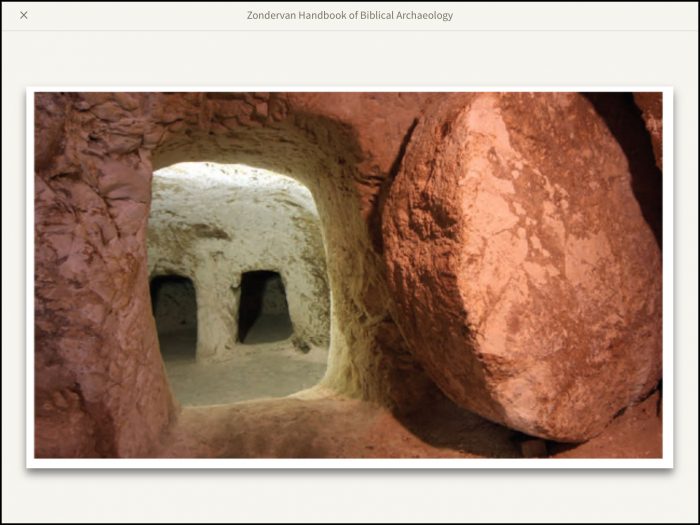
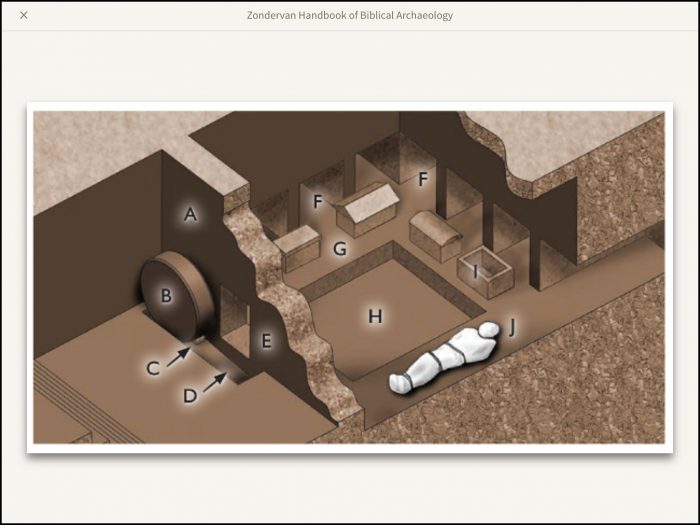

0 Comments